6 Animals Without Bones
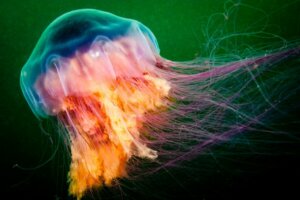

Written and verified by the biologist Francisco Morata Carramolino
When someone is asked to think of an animal, most people think of vertebrates. They’re generally larger, easier to see, and prevalent in various human cultures, but what about animals without bones?!
Even in specialized circles, vertebrates receive far more attention. Despite this, this group, made up of birds, mammals, reptiles, fish and amphibians – only makes up a tiny part of animal life. Those that are commonly called ‘bugs’ are infinitely more numerous and diverse than the rest.
These animals without bones have conquered every corner of the planet, they belong to very different groups, and still hide countless secrets for humans. Here we’re going to talk about the most important groups of invertebrates, each one with its peculiarities and niches. Keep reading if you want to learn more.
Characteristics of animals without bones!
Invertebrates make up the vast majority of animal life. Of the more than 30 phyla – the largest groups into which living beings are divided – vertebrates only account for one of them.
All of these phyla have formed after very ancient evolutionary divisions between animal groups. Therefore, it’s easy to understand that these groups are very independent from each other, have evolved along very different paths, and show radically different anatomical and ecological characteristics.
Invertebrates are generally small. Due to limitations in their circulatory and respiratory systems, the structure of their bodies, competition with vertebrates and other factors, most of these boneless animals don’t become very large. Some are even microscopic.
However, this hasn’t always been the case. In the past, with different environmental conditions, some invertebrates reached larger sizes than today. Invertebrates are also extremely ancient, as the first animals were part of this group. They tend to have fairly short lives and, of course, they don’t have calcium bones, like ours.
Despite this, some of these ‘primitive’ beings have other structures to hold their muscles and protect their body. These can be exoskeletons, shells, hydrostatic skeletons, etc.
1. Echinoderms (Phylum Echinodermata)
These animals include sea urchins, sea stars, sea cucumbers, and crinoids. The latter aren’t very well known by the general public but are among the most fascinating.
In total, there are some 20,550 described species of echinoderms, 7,550 alive today. Generally, they have a radial symmetry, since their body is divided into five equal parts around a central axis – where the mouth is. It can also be divided into a number of parts that are always a multiple of five.
Their bodies are covered by a characteristic calcareous exoskeleton, formed by small plates separated from each other, from which its scientific name comes. All echinoderms inhabit salty waters.
Interestingly, the larvae of these animals are not radial, but have bilateral symmetry.

2. Poriferous (Phylum Porifera)
Porifers are better known as marine sponges. Oddly enough, these beings are animals. In fact, they’re the oldest living beings that exist and make up the sister group to all the rest of the fauna on the planet.
The 8659 species that exist today are marine, although they can occupy different ecosystems within the oceans. They are mostly sessile (immobile) and don’t have real tissue. Its food is based on the filtration of suspended particles. To do this, they generate currents of water into their bodies thanks to flagellated cells.
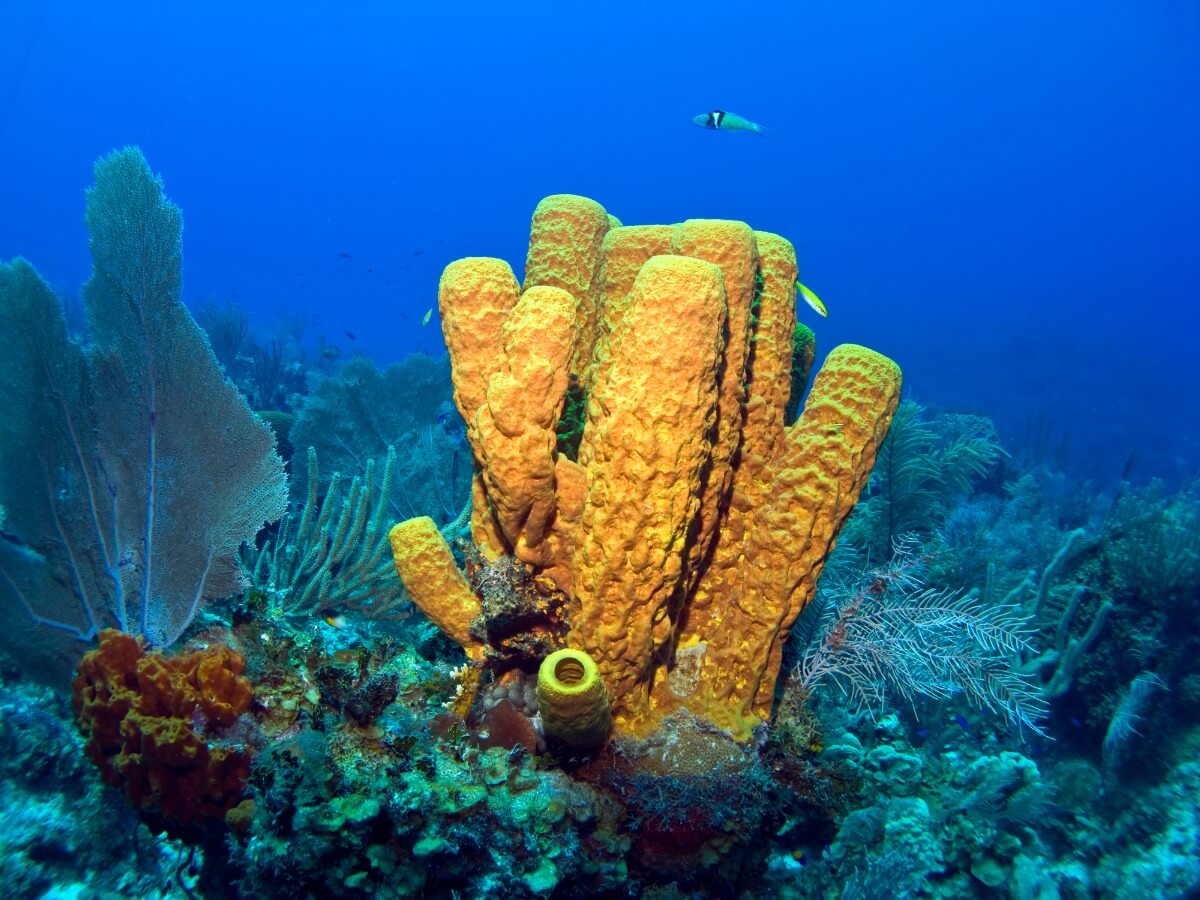
3. Arthropods (Phylum Arthropoda)
Arthropods are by far the most successful, numerous, and diverse phylum of animals. They consist of 1,257,040 living species and another 45,769 extinct ones. The large groups within the arthropods are the hexapods (which includes insects), the myriapods (millipedes and centipedes), chelicerates (spiders, scorpions, etc.), and crustaceans.
All of these boneless animals have bilateral symmetry. Their body is covered with a hard and chitinous exoskeleton, which protects them from the environment. In addition, they’re divided into a series of segments, each with a pair of jointed appendages.
These segments and appendages can be fused, modified, and specialized in any way imaginable, giving arthropods enormous adaptability. Thanks to them, these invertebrates have successfully colonized every corner of the planet.
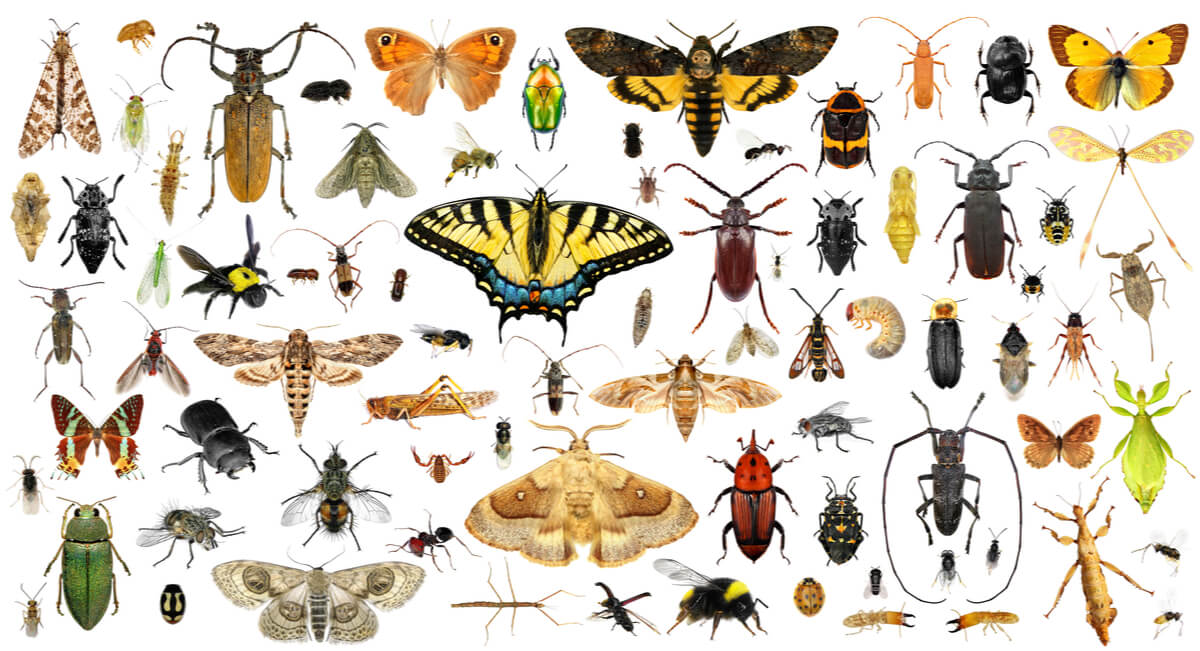
4. Mollusks (Phylum Mollusca)
These boneless animals are the second most diverse group, with some 84,977 current species. They’re soft-bodied and vulnerable organisms, mostly aquatic, that have taken on very different strategies.
On the one hand, bivalves aren’t very mobile, are filter feeders and are protected by very strong shells or valves. On the other hand, gastropods are more mobile and feed on plants or animals through the radula. Many carry a spiral-shaped shell within which they hide.
Lastly, there are the cephalopods, which have opted for extreme mobility in water, a carnivorous life, and have incredible intelligence. These animals carry multiple and mobile arms or tentacles, with which they reproduce, hunt and interact with the environment. In addition, they’re masters of color change.
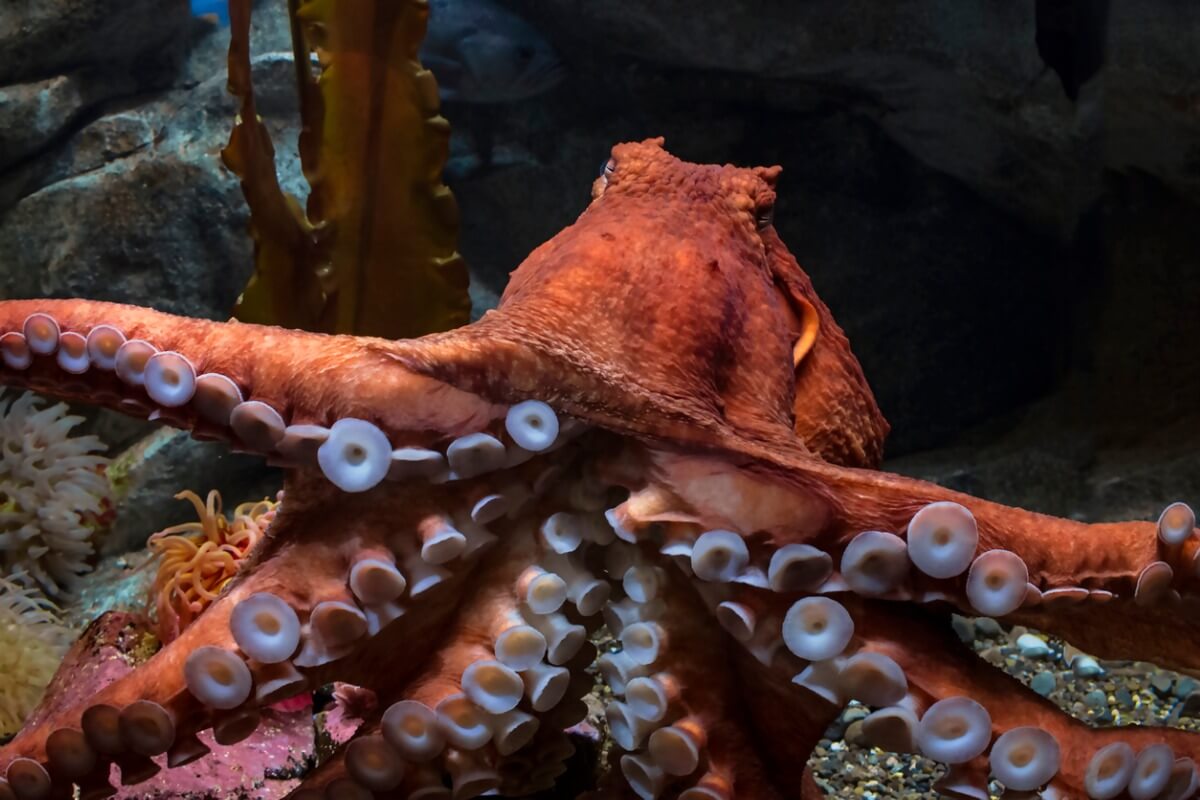
5. Cnidarians (Phylum Cnidaria)
Again, this is an exclusively aquatic group. It includes 10,203 very different species. Some cnidarians are mobile and are called jellyfish. Others are polyps, which live permanently attached to the marine substrate. Certain species can alternate between one option or another depending on their life phase.
On the other hand, there are cnidarians that live individually, while others form massive colonies of coordinated organisms. Some colonies are free-swimmers, while others are sessile. In addition, there are cnidarians that are covered with a rocky and inorganic protection: corals.
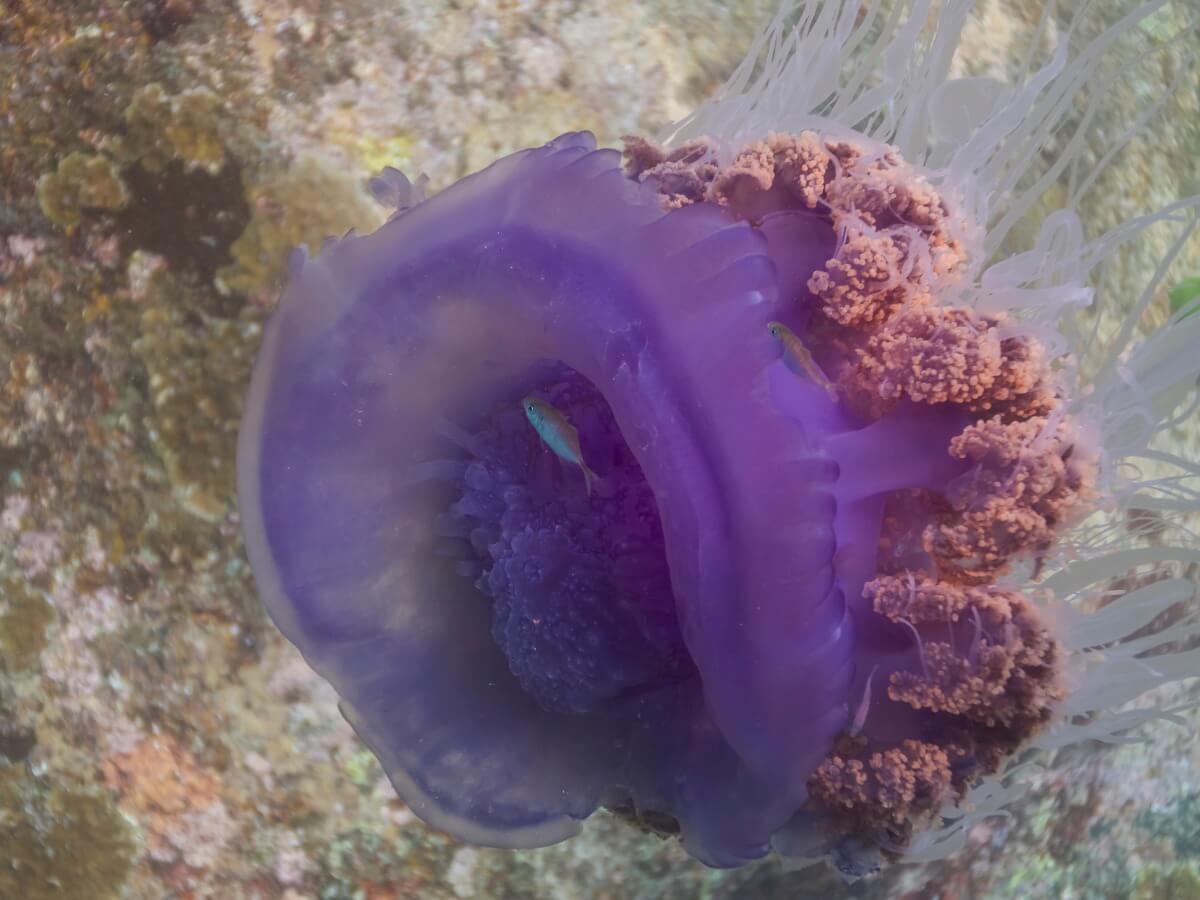
6. Annelids (Phylum Annelida)
Annelids are often referred to as ‘worms’, although this term is broad and includes other organisms. Most of its 17,388 species are marine. The majority group of annelids are the polychaetes. Some of them are mobile and have thickened appendages in each segment. Others live inside rigid tubes and expel filaments into the environment to catch food.
Earthworms or oligochaetes are also annelids. The same goes for the famous leeches.
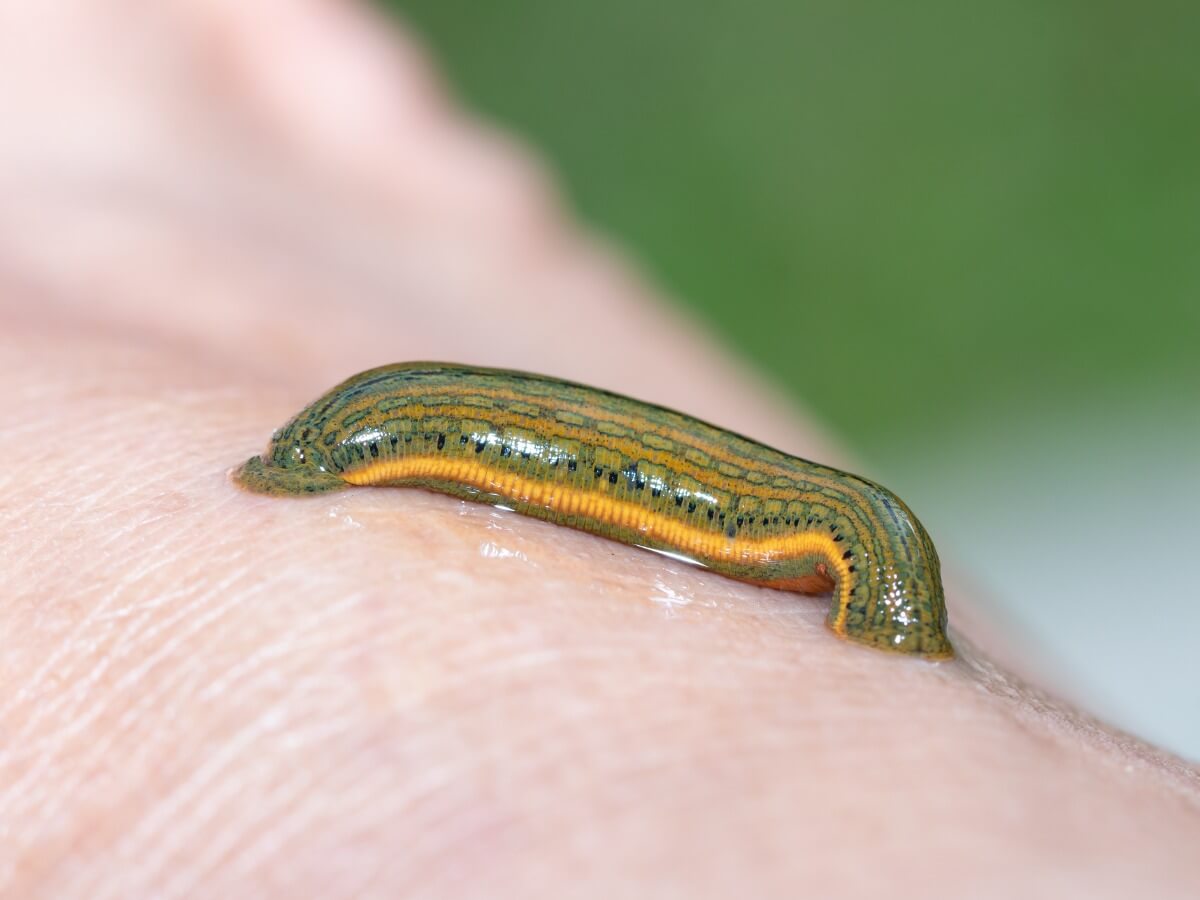
Although small and often overlooked, these animals without bones are invaluable. They carry out so much for their ecosystem, and serve as one of the foundations that supports ecosystems around the world. Without them, nothing would survive on this planet.
When someone is asked to think of an animal, most people think of vertebrates. They’re generally larger, easier to see, and prevalent in various human cultures, but what about animals without bones?!
Even in specialized circles, vertebrates receive far more attention. Despite this, this group, made up of birds, mammals, reptiles, fish and amphibians – only makes up a tiny part of animal life. Those that are commonly called ‘bugs’ are infinitely more numerous and diverse than the rest.
These animals without bones have conquered every corner of the planet, they belong to very different groups, and still hide countless secrets for humans. Here we’re going to talk about the most important groups of invertebrates, each one with its peculiarities and niches. Keep reading if you want to learn more.
Characteristics of animals without bones!
Invertebrates make up the vast majority of animal life. Of the more than 30 phyla – the largest groups into which living beings are divided – vertebrates only account for one of them.
All of these phyla have formed after very ancient evolutionary divisions between animal groups. Therefore, it’s easy to understand that these groups are very independent from each other, have evolved along very different paths, and show radically different anatomical and ecological characteristics.
Invertebrates are generally small. Due to limitations in their circulatory and respiratory systems, the structure of their bodies, competition with vertebrates and other factors, most of these boneless animals don’t become very large. Some are even microscopic.
However, this hasn’t always been the case. In the past, with different environmental conditions, some invertebrates reached larger sizes than today. Invertebrates are also extremely ancient, as the first animals were part of this group. They tend to have fairly short lives and, of course, they don’t have calcium bones, like ours.
Despite this, some of these ‘primitive’ beings have other structures to hold their muscles and protect their body. These can be exoskeletons, shells, hydrostatic skeletons, etc.
1. Echinoderms (Phylum Echinodermata)
These animals include sea urchins, sea stars, sea cucumbers, and crinoids. The latter aren’t very well known by the general public but are among the most fascinating.
In total, there are some 20,550 described species of echinoderms, 7,550 alive today. Generally, they have a radial symmetry, since their body is divided into five equal parts around a central axis – where the mouth is. It can also be divided into a number of parts that are always a multiple of five.
Their bodies are covered by a characteristic calcareous exoskeleton, formed by small plates separated from each other, from which its scientific name comes. All echinoderms inhabit salty waters.
Interestingly, the larvae of these animals are not radial, but have bilateral symmetry.

2. Poriferous (Phylum Porifera)
Porifers are better known as marine sponges. Oddly enough, these beings are animals. In fact, they’re the oldest living beings that exist and make up the sister group to all the rest of the fauna on the planet.
The 8659 species that exist today are marine, although they can occupy different ecosystems within the oceans. They are mostly sessile (immobile) and don’t have real tissue. Its food is based on the filtration of suspended particles. To do this, they generate currents of water into their bodies thanks to flagellated cells.

3. Arthropods (Phylum Arthropoda)
Arthropods are by far the most successful, numerous, and diverse phylum of animals. They consist of 1,257,040 living species and another 45,769 extinct ones. The large groups within the arthropods are the hexapods (which includes insects), the myriapods (millipedes and centipedes), chelicerates (spiders, scorpions, etc.), and crustaceans.
All of these boneless animals have bilateral symmetry. Their body is covered with a hard and chitinous exoskeleton, which protects them from the environment. In addition, they’re divided into a series of segments, each with a pair of jointed appendages.
These segments and appendages can be fused, modified, and specialized in any way imaginable, giving arthropods enormous adaptability. Thanks to them, these invertebrates have successfully colonized every corner of the planet.

4. Mollusks (Phylum Mollusca)
These boneless animals are the second most diverse group, with some 84,977 current species. They’re soft-bodied and vulnerable organisms, mostly aquatic, that have taken on very different strategies.
On the one hand, bivalves aren’t very mobile, are filter feeders and are protected by very strong shells or valves. On the other hand, gastropods are more mobile and feed on plants or animals through the radula. Many carry a spiral-shaped shell within which they hide.
Lastly, there are the cephalopods, which have opted for extreme mobility in water, a carnivorous life, and have incredible intelligence. These animals carry multiple and mobile arms or tentacles, with which they reproduce, hunt and interact with the environment. In addition, they’re masters of color change.

5. Cnidarians (Phylum Cnidaria)
Again, this is an exclusively aquatic group. It includes 10,203 very different species. Some cnidarians are mobile and are called jellyfish. Others are polyps, which live permanently attached to the marine substrate. Certain species can alternate between one option or another depending on their life phase.
On the other hand, there are cnidarians that live individually, while others form massive colonies of coordinated organisms. Some colonies are free-swimmers, while others are sessile. In addition, there are cnidarians that are covered with a rocky and inorganic protection: corals.

6. Annelids (Phylum Annelida)
Annelids are often referred to as ‘worms’, although this term is broad and includes other organisms. Most of its 17,388 species are marine. The majority group of annelids are the polychaetes. Some of them are mobile and have thickened appendages in each segment. Others live inside rigid tubes and expel filaments into the environment to catch food.
Earthworms or oligochaetes are also annelids. The same goes for the famous leeches.

Although small and often overlooked, these animals without bones are invaluable. They carry out so much for their ecosystem, and serve as one of the foundations that supports ecosystems around the world. Without them, nothing would survive on this planet.
All cited sources were thoroughly reviewed by our team to ensure their quality, reliability, currency, and validity. The bibliography of this article was considered reliable and of academic or scientific accuracy.
- Bourlat, S. J., Nielsen, C., Economou, A. D., & Telford, M. J. 2008. Testing the new animal phylogeny: a phylum level molecular analysis of the animal kingdom. Molecular Phylogenetics and Evolution, 49: 23-31.
- Zhang, Z. Q. 2013. Animal Biodiversity: An update of classification and diversity in 2013. In: Zhang, Z. Q.(ed.) Animal biodiversity: An outline of higher-level classification and survey of taxonomic richness (addenda 2013). Zootaxa, 3703: 5-11.
- Brusca, R. C., & Brusca, G. J. 2003. Invertebrates. Sinauer. Sunderland.
- http://www.bbc.com/earth/story/20150325-all-animal-life-in-35-photos
This text is provided for informational purposes only and does not replace consultation with a professional. If in doubt, consult your specialist.








